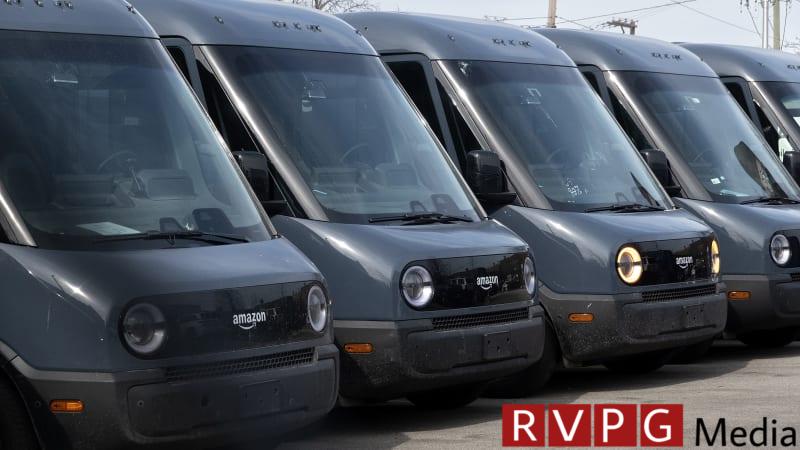LOS ANGELES/SAN FRANCISCO – UPS and FedEx are facing uncertainty over U.S. deliveries of the large, boxy electric vans with running boards they need to replace their gas guzzlers and curb the country’s climate-damaging exhaust emissions.
The package delivery giants’ path to electrification is critical to U.S. President Joe Biden’s transportation climate goals. But achieving that goal is hampered by battery shortages that are limiting the supply of electric vehicles and keeping prices high, as well as start-up electric van manufacturers running out of money and shutting down.
“The question is, how many of these (companies) will be here in five or 10 years?” Luke Wake, vice president of fleet maintenance and engineering at UPS, told Reuters.
In a worst-case scenario, UPS and FedEx will also lose access to California vouchers that help cover electric vehicle prices, which can be about twice as high as traditional delivery vans.
UPS and FedEx received some relief from electric vehicle supply shortages when pioneering California, the epicenter of electrification, shelved a rule that would have required them to purchase only electric delivery vehicles starting this year. An industry group that includes UPS and FedEx has filed a lawsuit claiming that California first needs approval from U.S. regulators.
Delivery companies and their electric van suppliers face a quandary, said Sam Fiorani, vice president at AutoForecast Solutions.
“You need the demand to have the supply and you need the supply to have the demand. The problem is getting both to work at the same time,” he said.
UPS has been testing and purchasing electric vehicles for decades and is an indicator of demand. The company has more than 150,000 delivery vehicles around the world and is among the top buyers of step vans, replacing about 7,000 of its ubiquitous brown trucks each year in the U.S. alone.
UPS and FedEx, which have each launched about 1,000 electric step vehicles, are keeping their options open.
UPS is sticking to its 2016 plan to rely on electric vehicles and other alternative fuel vehicles to reduce emissions. These other vehicles include 13,000 stage vans powered by renewable natural gas (RNG).
FedEx told Reuters it is looking at ways to add more lower-emission delivery vehicles to its fleet.
“SUBJECT TO AVAILABILITY”
UPS and FedEx prefer step vans – larger, often custom-built trucks with spacious cargo holds.
According to data from nonprofit CALSTART, U.S. deployments of EV step vans by UPS, FedEx and other providers such as bread and laundry carriers peaked at 275 in 2021 and fell to 238 in 2022. The group estimates those deployments in 2023 will be between 220 and 250.
Meanwhile, delivery rival Amazon.com already has 10,000 smaller Rivian electric vans in the U.S. and Europe – still a tiny fraction of the broader van market.
According to UPS and FedEx, vans with electric steps are hard to find.
“Availability of larger capacity carriers is limited,” FedEx said in a statement.
In 2021, FedEx announced its goal of converting 100% of pickup and delivery vehicle purchases to electric vehicles by 2030 at its company-owned Express unit. Statements about this goal sometimes include the words “subject to availability.”
UPS bet big on the shift to electric vehicles in 2020, investing in U.K.-based Arrival and placing an order for 10,000 electric vans. But Arrival (47K0.BE), opens new tab, ran out of cash before selling a single vehicle to UPS.
The arrival is not alone. Emerging electric vehicle maker Lightning eMotors is in receivership, while Workhorse and Xos have issued going concern warnings.
Atlanta-based UPS expects to use 40% alternative fuel in its ground operations by 2025, up from 29% currently. RNG trucks today can be more climate-friendly than electric vehicles that run on electricity generated from coal and other fossil fuels, Wake said.
Environmentalists disagree with UPS’s RNG analysis, citing the low proportion of RNG in the natural gas supply and the risk of leaks that release methane, a heat-trapping greenhouse gas.
STICKER SHOCK
Wake said electric vehicle prices could be “costly,” but declined to disclose how much UPS is paying.
In Southern California, UPS recently delivered new zero-emission step vans from longtime supplier Freightliner Custom Chassis Corp — owned by Daimler Truck — and SEA Electric, which is being purchased by Canadian company Exro Technologies.
The cost of an FCCC MT50e electric step van is just over $260,000, according to U.S. General Services Administration documents. That’s about twice the cost of a traditional model, industry consultants said. Freightliner declined to comment on pricing, saying, “We are prepared to produce as many MT50e products as the market and our customers demand.”
For years, California offered purchase vouchers worth $60,000 or $85,000 to all commercial buyers of vans with power steps – but in 2023 changed the terms for large companies like UPS and FedEx.
A Reuters review found that these companies now have to buy 30 trucks without incentives before they are eligible for half the voucher value for additional purchases. These incentives for large companies end on January 1, 2025.
As states like Oregon and Washington prepare to offer vouchers, California’s incentive change could hurt adoption because the largest fleets historically account for a larger percentage of new truck purchases, said CALSTART Vice President Tor Larson. If the U.S. Environmental Protection Agency clears the way for California to limit major delivery company fleet purchases to electric and other zero-emission vehicles, it could give the market for electric running-board vans a European-style regulatory boost. Because the rule could then be adopted by other US states.
“The US is trying to use carrots. Europe is doing a good job of using the whip,” said Scott Phillippi, a former UPS executive.
